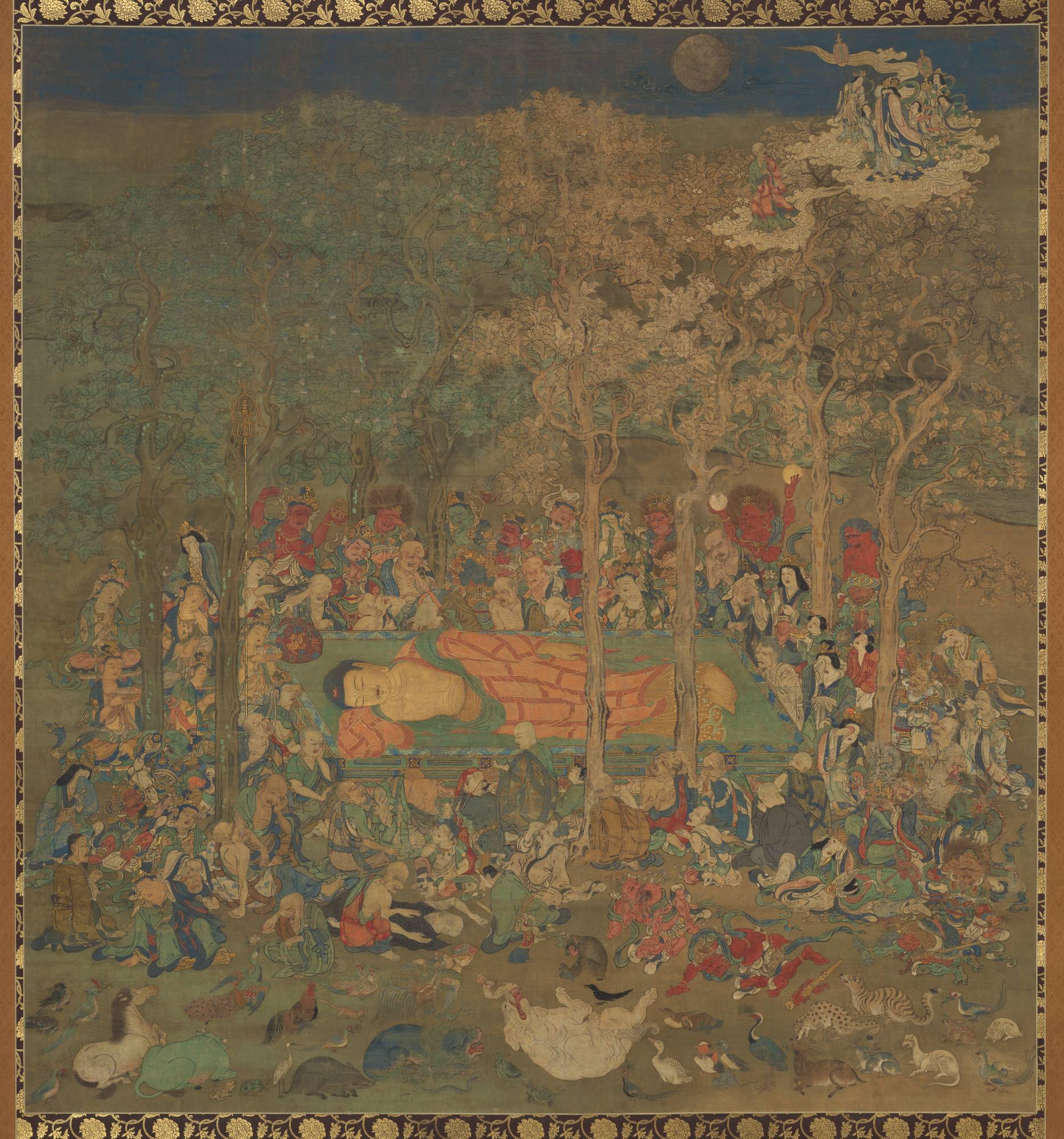In a northern wing of New York’s Metropolitan Museum of Art — at the opposite end from Cezanne’s apples and one floor above the first-century B.C. Temple of Dendur — is a work of intense suffering and surprising complexity.
The Death of the Historical Buddha, a hanging scroll from the Kamakura Period (1185-1333), depicts the body of the Buddha surrounded by grievers in a grove in Kushinagar, in India’s Uttar Pradesh. He has just died and reached final enlightenment, a moment that’s commonly depicted and hung as a scroll (called Nehan-zu) in temples annually to celebrate his death. This particular painting, on display as part of an exhibition called “Anxiety and Hope in Japanese Art,” is an excellent early example of such a work, says Aaron Rio, the museum’s associate curator of Japanese art.
At first glance, it’s a scene of profound sadness: A throng of Buddha’s followers — attendants, priests, even deities and animals — are shown crying out in sorrow, covering their eyes and clutching their faces. Buddha’s mother, who died shortly after his birth, is shown weeping from heaven. Even the color of some trees is muted, as if they too are in mourning.



















With your current subscription plan you can comment on stories. However, before writing your first comment, please create a display name in the Profile section of your subscriber account page.